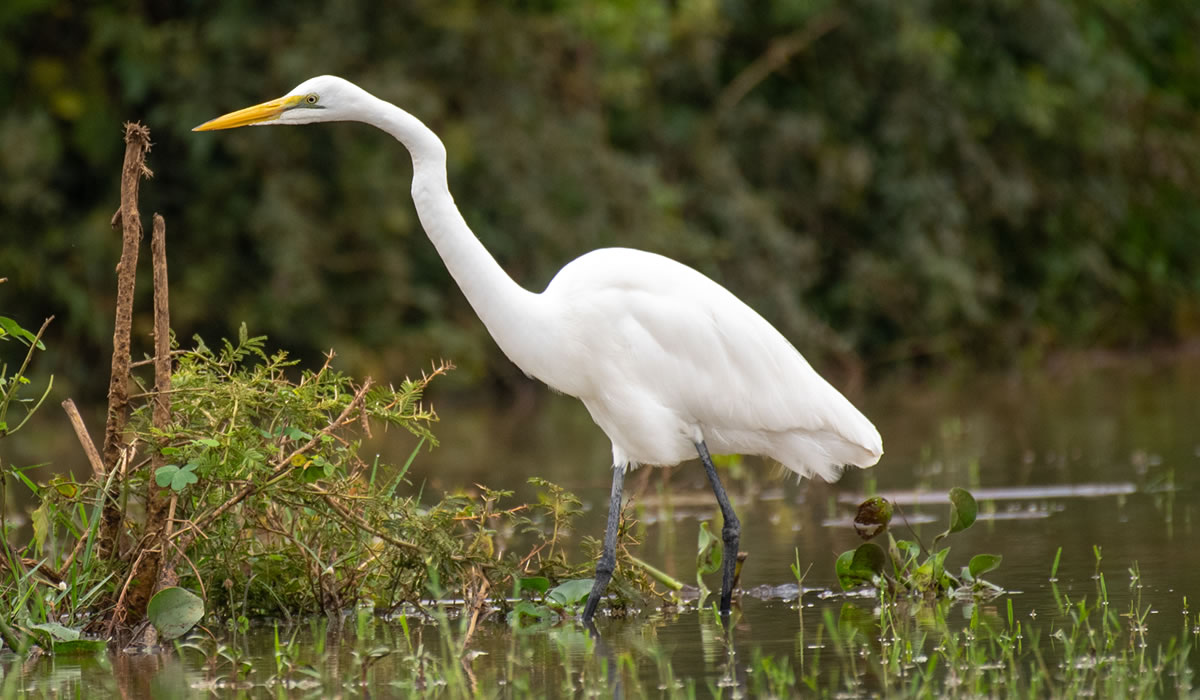Rwanda is a dream destination for bird watchers. With its diverse ecosystems ranging from montane rainforests to savannahs and wetlands, Rwanda is home to an astonishing variety of bird species. Over 700 bird species have been recorded in the country, including 29 Albertine Rift endemics, making Rwanda one of Africa’s top birding destinations. Whether in national parks, swamps, or even urban gardens, bird watchers can witness a remarkable array of species in this small but incredibly biodiverse nation. Bird Watching in Rwanda is one of the popular tourist activities sought after by many tourists to this beautiful land of a thousand hills.
One of the most renowned birding destinations in Rwanda is Nyungwe Forest National Park, located in the southwestern part of the country. This vast tropical rainforest, one of the oldest in Africa, harbors over 300 bird species, including 27 Albertine Rift endemics. Among the most sought-after birds here are the Great Blue Turaco, Rwenzori Turaco, Red-collared Mountain Babbler, Grauer’s Swamp Warbler, and the elusive Albertine Owlet. Birding in Nyungwe is particularly rewarding due to the dense canopy and rich undergrowth, which provide habitats for many rare species. The park also offers a well-maintained network of trails, including the famous Canopy Walkway, which provides bird watchers with a unique vantage point to observe canopy-dwelling species.

Akagera National Park, located in the eastern part of Rwanda along the border with Tanzania, offers a completely different birding experience. The park’s mix of savannah, wetlands, and woodland makes it an excellent location to spot waterbirds, raptors, and grassland species. With over 480 bird species recorded, Akagera is home to iconic birds such as the African Fish Eagle, Shoebill Stork, Papyrus Gonolek, and the rare Red-faced Barbet. The park’s lakes, including Lake Ihema, attract large flocks of waterbirds, including pelicans, cormorants, and herons. Boat safaris on Lake Ihema offer a great opportunity to see these birds up close while enjoying the park’s scenic beauty.
Volcanoes National Park in the northwest is best known for its mountain gorillas, but it is also a fantastic bird-watching destination. The park, which is part of the Virunga Massif, hosts around 200 bird species, including 17 Albertine Rift endemics. Notable species include the Ruwenzori Double-collared Sunbird, Dusky Crimsonwing, and the Handsome Francolin. The dense bamboo forests and afro-alpine moorlands create a rich habitat for many unique species. While bird watching in Volcanoes National Park, visitors can combine their experience with hikes to the Dian Fossey research site or the picturesque Mount Bisoke crater lake.
Another prime birding spot is Gishwati-Mukura National Park, Rwanda’s newest national park. This park, which is still recovering from years of deforestation, is gradually being restored into a haven for biodiversity. Bird watchers can find species such as the Grey Crowned Crane, Regal Sunbird, and Mountain Yellow Warbler. Gishwati-Mukura is particularly interesting for conservationists, as it represents a vital ecological corridor between larger forested areas, helping to sustain bird populations.
Rwanda’s wetlands also offer fantastic birding opportunities. The Rugezi Marsh, a Ramsar-listed wetland in the northern part of the country, is a crucial habitat for several waterbirds, including the endangered Grauer’s Swamp Warbler and the Papyrus Yellow Warbler. Other wetland areas such as Nyabarongo Wetlands and Akanyaru Wetlands are equally rich in birdlife, attracting herons, kingfishers, and ibises. These wetlands play a significant role in Rwanda’s ecosystem and are essential for maintaining the country’s rich avian diversity.
Even Kigali, Rwanda’s capital city, offers surprising birding opportunities. Green spaces such as Nyarutarama Lake, also known as “Lover’s Lake,” attract a variety of birds, including the African Paradise Flycatcher, White-browed Robin-Chat, and the Speckled Pigeon. Urban parks and gardens also provide habitats for numerous species, making Kigali a great starting point for birding enthusiasts.
Bird watching in Rwanda is best enjoyed during the dry seasons, from June to September and December to February. During these months, the trails are more accessible, and birds are more active as they search for food. However, Rwanda’s equatorial climate means birding is possible year-round, with different seasons offering unique sightings, such as migratory species that arrive between November and April.
To make the most of a bird-watching trip to Rwanda, visitors should bring essential gear such as binoculars, a good field guidebook, and a camera with a telephoto lens. Hiring a professional birding guide is highly recommended, as their expertise can significantly enhance the experience by helping to identify birds by both sight and sound.
Rwanda’s commitment to conservation plays a significant role in protecting its avian diversity. National parks and protected areas are well-managed, and community-based conservation projects help raise awareness about the importance of preserving bird habitats. Organizations such as the Rwanda Birding Club and BirdLife International actively engage in bird conservation efforts, ensuring that Rwanda remains a top birding destination for years to come.
In conclusion, Rwanda is a paradise for bird watchers, offering an incredible diversity of species across its varied landscapes. From the lush rainforests of Nyungwe to the savannahs of Akagera and the wetlands of Rugezi, every birding location in Rwanda presents a unique and rewarding experience. Whether you are an avid birder or a casual nature lover, the country’s rich avian life and stunning scenery make it an unmissable destination for bird watching in Africa.

